As airlines shrink, there is a silver lining – a vast disposal of older-generation jets, a fleet planning shift and the acceleration of the digital transformation.
“The industry is moving towards more efficient fleets that have larger average seating capacity and lower maintenance costs especially over the short-to-medium hauls,” says Paramaguru ‘Guru’ Prakash speaking for himself, not as Information Technology manager for Boeing Distribution Services. “This will slow MRO spend since the expensive, late-life maintenance declines and intervals between scheduled maintenance lengthen with newer jets.”

Still, a parked fleet requires maintenance, and, according to American Airlines Vice President Engineering & Quality Technical Operations Stacey Morrisey American Airlines’ 400 parked aircraft required 100,000 man-hours.
Return to Service (RTS) requires a lot of maintenance, Aviation Consultant Bob Mann says. This work now includes MAX 8 RTS given FAA’s re-certification in mid-November.
“RTS is an intensive task,” Mann explains. “It requires a separate set of AMM-specified ground and flight tasks designed to validate system integrity and performance, then an engineering/maintenance flight test back into service. The huge scale of the entire industry’s RTS will probably throw on-condition event codes of types and at scales that have never previously been seen and will test how maintenance and OEM organizations parse and efficiently utilize this data, while maintaining and supporting operational integrity.”
Mann noted different airlines have different solutions.
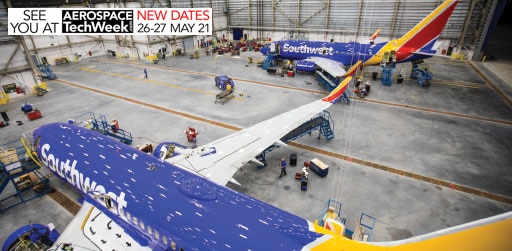
“Southwest, is cycling through its entire fleet to keep them active,” Mann says. “And, for all but long-term ‘pickling’ of fleets, this generally requires periodic engine starts, hydraulic system pressurization, control movement, rolling the aircraft forward several wheel rotations, all to keep seals from deteriorating and wheels and bearings ‘taking a set’ from lack of exercise. Southwest appears to be idling very few aircraft long-term, but to cycle the fleet through a two-to-three-day week, meaning most are idle less than the number of days required to force storage tasks. This approach will pay off when ramping up.”
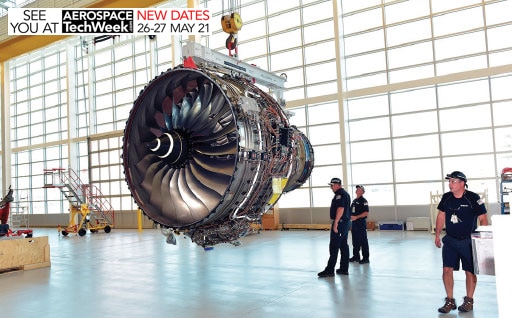
Changing Strategies
Hitting that reset button not only reduces fleet complexity but changes acquisition strategies from growth to replacement.
“Airlines are optimizing specific fleet types for certain routes,” Teal Group vice president Analysis Richard Aboulafia says. “They are also leveraging their perceived negotiating power in buying planes back and forth between OEMs. For those carriers offering MRO services, like Delta TechOps, it is to gain competence in work provided to other customers. They also may have disparate fleets especially if deals were harder to get out of after mergers.
“It will be interesting to see if the A321neo will allow others to follow a single fleet type given its international range with a family of aircraft,” he continues. “The pandemic is unlikely to change anything because the 737 MAX grounding was more disruptive, having led to doubts of other non-MAX 8 variants. It also created the risk Boeing will offer a new single-aisle type, even a complementary one, in the not-to-distant future, accelerating Southwest’s decision on a second fleet type.”
Yes, fleet simplification streamlines the operation but, “the simplicity of a single fleet type, such as the famous efficiency of Southwest’s Boeing 737 fleet, restricts it from serving markets. It doesn’t allow single-fleet airlines to check every box but the boxes they do check are at lowest cost and greatest commonality, which pays forward to airlines, employees, customers, investors.”
Changing fleet decisions may bring Southwest’s single fleet to an end, according to Aboulafia. In 2019, MAX groundings prompted new Southwest fleet evaluations of the Airbus A220 and the Boeing MAX 7.
“This is a day of reckoning for Southwest,” says Aboulafia. “The MAX is the last 737 family. At some point, when they need new planes for capacity expansion or for fleet modernization, they will need to move on from the 737 to whatever the next generation brings because the MAX 7 might not be their best option for smaller routes. Its larger engines may mean it is not as appealing as previous shrink models. If they conclude that this is the case, and that they still want something in the 100/130-seat class, the A220 would be logical.”
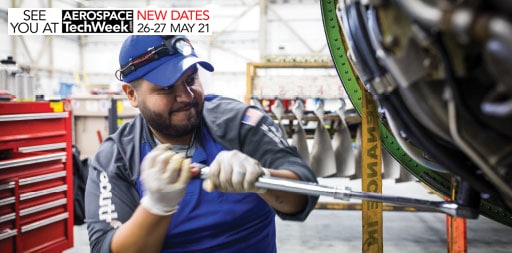
Even so, Southwest has always taken advantage of deals it can make with Boeing on white tails, coloring its fleet decisions in the past.
Immediate Benefits
“This streamlining of the fleet provides a number of benefits to the airline, particularly by removing complexity from the operation,” Morrisey told Aviation Maintenance. “From Technical Operations to Flight and Flight Service, Airports and every team in between, reducing the number of fleets has the benefit of making what we do simpler and more effective.”
Morrisey sees multiple fleet types as a competitive advantage allowing service to different size cities difficult to serve with only a single type.
“This greatly improves the scale of the network and, since we aim to attract more schedule-sensitive passengers, our fleet mix allows us to build more schedule options,” she says. “While it introduces an additional element of complexity, the tradeoff is being able to better serve our customers.”
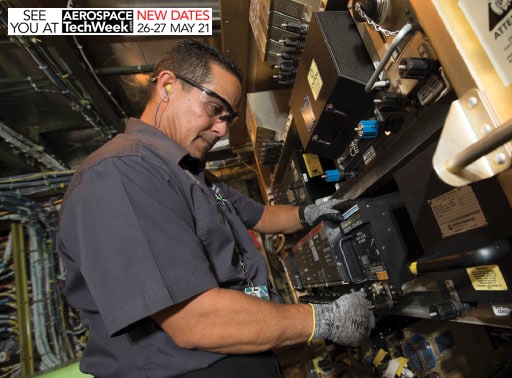
American is now down to two mainline flight deck types. “This benefits our operational performance through training efficiency and streamlined maintenance,” she says. “Overall, we try to make things as similar as possible within a specific fleet type including Boeing 737s and Airbus A321s, which gives us the same consistent cabin layout on each fleet, making the aircraft more interchangeable throughout the network and operating day.”
Universal Synaptics CEO Kenneth Anderson III agrees.
“A one size fits all business strategy does not exist,” he says. “Aircraft such as the B737-900 or A220 provide better customer experience. Replacing outdated fleets positively impacts reliability and fuel economy. It is in the best interests of airlines to minimize fleet types to reduce the complexity of managing varying maintenance requirements specifically during a time where a reduction in force has led to those with the most experience taking on different roles or retiring. Fleet trends prior to Covid-19 maximized load factors while reducing fuel and maintenance cost, without compromising customer requirements. Post Covid-19, fleet trends have started to take shape but with applicable factors weighted much differently.”
Shifting Life Cycle
“Covid prompted a shift in maintenance fleet life-cycle view,” Mann says. “The normal view is to manage fleets for greatest returns on lowest investment over their economic lifetime which is normally 20-plus years, consuming green time and staging checks to optimize fleet operational and maintenance line utilization. Suddenly, the view is a quick acid test of fleet viability vs. complexity costs and cash burn during a multi-year demand desert. As a result, some middle-aged fleets are facing early demise, if utilization will be impaired for years to come. This requires a re-set of fleet plan and route assignment as the network recovers. Furthermore, this lessens the viability of acquiring or retaining an aircraft type and configuration unique to route.”
In the current pandemic, companies are pulling many levers to shave costs, according to Prakash. “Beyond standardizing the fleet by optimizing aircraft design that can improve efficiencies, maintenance is leveraging technology with robots performing digital crack inspections on engine parts using advanced sensors rather than humans. Similarly, maintenance is using drones for aircraft inspections that helps reduce the time from up to six hours to between one and two hours. Finally, on-demand 3-D printing has replaced lengthy orders for replacement polymer parts such as screen surrounds and tray latches.”
All this was part of a process predating Covid. In the summer of 2019, American operated nine fleets. As it heads into 2021, the number of mainline fleet types is now four.
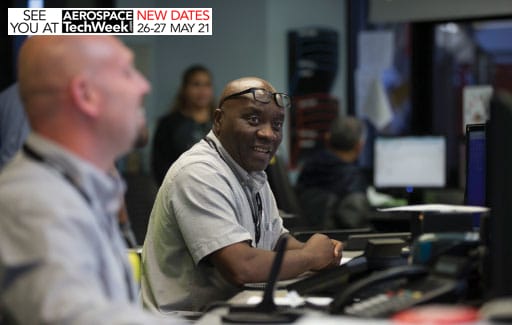
“This past year we integrated all of our parts into a single system and are now completing a multi-year migration of all of our aircraft into one operating system,” says Morrisey, one of the few women operational VPs in the industry. “Innovation doesn’t stop because of this pandemic. Less fleet complexity means we can focus our efforts on improving our processes that underpin our maintenance machine. With fewer aircraft types, we don’t need to store as many spare parts for younger fleet types.”

Training also benefits. “One of the great things that we have seen is the evolution of distance learning for our frontline AMTs,” she reported. “It’s been a great option in addition to some in-person training, to more easily accommodate our team members specifically in cities currently under Covid-19 travel restrictions, allowing them to stay current on their fleet qualification requirements no matter where they are. The new distance learning helps us quickly deliver training in new stations to accommodate network changes that fly different fleet types to various cities where a particular fleet did not operate previously.”

Tom Duffy
Regional Dancers
Regional airlines must perform a “pretty sophisticated dance” when it comes to maintenance, according to Tom Duffy, Republic Airways vice president of Maintenance.
“We only get paid when we fly, so we have to work with our partners who want the minimum amount of heavy maintenance when an aircraft is out of service,” he explained, noting the airline flies for all three major carriers. “They need to be able to schedule the aircraft efficiently throughout the year, so it is always a shuffle to ensure aircraft availability.”
The airline now operates a single Embraer fleet which saves money on inventory costs from its pre-bankruptcy multi-certificate, multi-fleet type operation. It is now down to two heavy maintenance operators and has a lower mechanic training footprint.
Republic owns the vast majority of the 215 aircraft is has under contract today. The regional is responsible for maintenance and reimbursement is baked into its capacity purchase agreement contracts.
Digital Transformation
wPerhaps the biggest benefit to retiring older aircraft is the promise of health monitoring systems on newer aircraft. While normally not good for MROs, it does reveal a path to the future.
“Right now, the hype is bigger than the reality,” says Richard Brown, Naveo Consultancy managing director. “The majority of MRO spend is generated by mature, mid-life aircraft between five and 17 years. MROs are mostly dealing with metal fuselages, pneumatics, hydraulics and electronics but increasingly they will be dealing with composites and advanced avionics and electrical systems which offer far greater prognostic and diagnostic capabilities compared to the mid-life-to-mature aircraft. Those aircraft do not have the sophisticated health monitoring systems of the Dreamliner, the A220 or A350. While a lot of people are excited about the wealth of data available from aircraft, this highly digital fleet is relatively small but growing.”
Duffy’s experience with digital aircraft extends back to 1988 and the Airbus 320. Indeed, when he arrived at Republic, he lobbied for the Embraer EJet because of the digital tools it offered.
“Changes coming from data analysis is not officially endorsed by international regulators on transport category aircraft yet,” he told Aviation Maintenance, noting Republic is part of the ICAO task force working on acceptance. “Airlines and OEMs have been pushing but regulators are still concerned. Still Republic has enough experience with it to know it is the right thing to do. We are already using downloaded data and tools to diagnose and identify faults. We can also receive information during the flight via ACARs. So, combined with our historical knowledge of the aircraft and systems, we can determine how we need to respond.”
Brown pointed to the popularity of the engine and OEM health monitoring solutions and Airbus’s Skywise system, a digital platform designed to increase dispatch reliability and customer satisfaction. Other OEMs and MROs have developed or are developing their own monitoring capabilities including Lufthansa Technik’s Aviatar and Air France KLM E&M’s Prognos.
“These systems are meant to achieve the holy grail of aviation maintenance – taking an unscheduled event and turning it into a scheduled event,” says Brown. “So, if an airline knows an APU is going to fail, they can replace it before it fails. Now, it is fly to fail and then deal with the unplanned disruption. If you can use predictive analytics to look at how the component or engine or system is performing you can predict failure and save the industry billions of dollars in the cost and compensation associated with disrupting passenger flights. The implications on the supply chain is huge because OEMs and parts suppliers make money on spares.”
Two other advances also promise to streamline maintenance.
“OEMs and engine makers are looking at how parts perform in real time and in real life,” Brown explained. “They are looking at whether the performance in a harsh environment like the Middle East means different wear compared to a milder one like, say, Iceland. If they can discern the differences these environments have on aircraft and engines, they can customize maintenance programs to the operator for more cost-effective maintenance. We must re-evaluate the way we think of MRO to the way the operation and aircraft is performing which not only benefits airlines but encourages good behavior.”
Prakash agrees. “Advances like Cloud computing and Internet of Things (IOT) gathers engine health monitoring data quickly and efficiently,” says Prakash. “With the use of smart data analysis, predictive tools and engineering expertise to add additional insight, engine OEMs are helping airlines reduce fuel usage, optimize routes, ensuring the right equipment is in place to service engines more quickly and to maintain the highest levels of availability. Using these advanced tools OEMs can maximize the operational life of engines and help operators become more predictive and less reactive in terms of repairing and replacing their aircraft engines.”
Brown noted real-time monitoring is becoming standard offering the potential for more on-wing, on-aircraft maintenance all designed to keep the aircraft flying, reduce disruption and reduce the amount of time the aircraft is out of service.
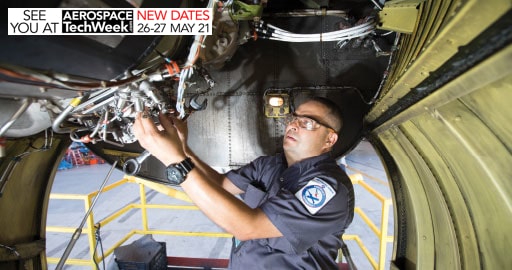
That is exactly what another tool offers. A development from Netherlands Aerospace Laboratory (NLR) uses artificial intelligence operators can schedule a bundle of small maintenance tasks between flights.
“FlexPlan only uses readily available information, namely the Maintenance Planning Document, aircraft maintenance status, aircraft configuration, flight schedule, and a list of maintenance facilities,” wrote NLR Principal Arjan de Jong in an August 2019 post. “FlexPlan is a tool that automatically creates maintenance programs comprising of small packages and a tool that plans these packages optimally between scheduled flights. The result is a comprehensive maintenance program that schedules maintenance around your flight schedule and is sufficiently robust to facilitate last-minute changes if your flight schedule is disrupted. And, since FlexPlan adheres to the task intervals specified by the original equipment manufacturer, you do not face regulatory issues.”
The question is how MROs will be integrated into this brave new world. Brown indicated MROs, need to think about how they plan and deliver maintenance.
“This transformation takes a mindset and skills change,” he says, “because you also must believe what the data is saying is correct. You must trust that removing a part before failure is the right thing to do but as we build expertise this will become easier. But the industry must do a better job of explaining the savings they have achieved on health monitoring. Skeptics need to be reassured it’s all worthwhile. So far, OEMs, MROs and airlines are reluctant to talk about the benefits – to allow airlines to compare the different solutions. The industry also needs to do a better job of promoting the advantages of this technology on the bottom line and in passenger satisfaction.”
Duffy wants to take subjectivity out of maintenance. “So much of maintenance is subjective, making it difficult to identify what is really going on,” he explains. “The question is whether the deterioration that happens during normal operations is affecting how a component is performing.”
He pointed to the four Embraer air data smart probes, saying aircraft mechanics need a less subjective way of determining performance.
“We compared the photos of probes to the data retrieved from the aircraft and can prove that subjective human evaluation can’t be directly related to system performance determined with aircraft recorded data. We are pushing Collins Aerospace to move us to a science-based, performance monitoring system to eliminate this subjectivity. That is a fundamental change we want to get to.”
He also dreams of an aircraft coming into the gate and the captain reporting a problem. “I see a maintenance tech opening a panel and taking a photo with a smartphone,” he says. “Because of Google recognition, we identify the part, it asks whether we want to replace it. If yes, the smartphone works with sourcing the part and, when it’s delivered, the instructions for replacing it is delivered on the smart phone. The entire transaction is logged into the maintenance system digitally and are aircraft records are automatically updated. I know all this exists now so it will happen.”
That would be a brave new world.
